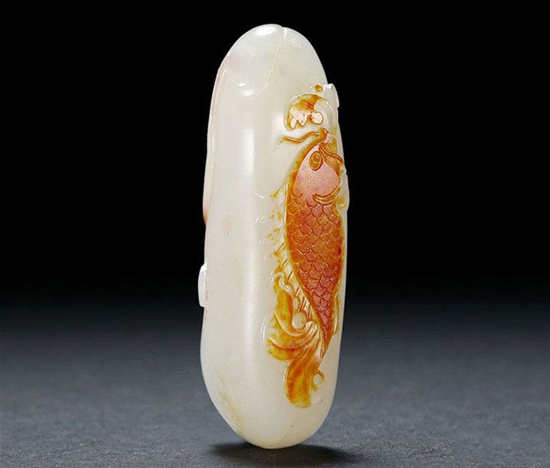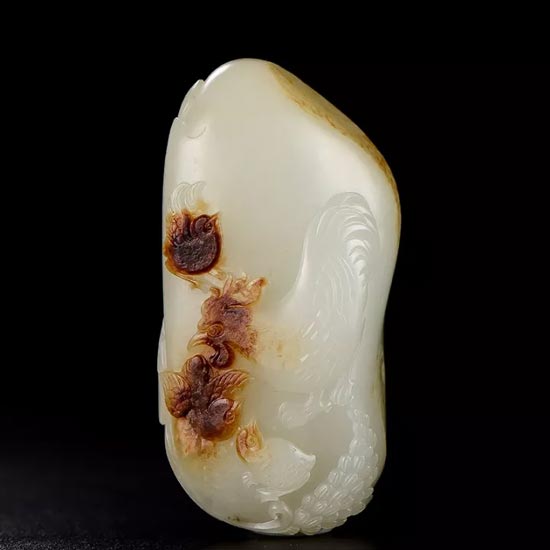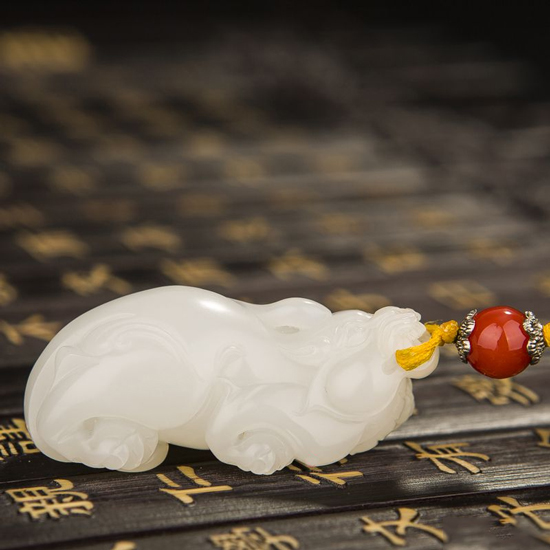Frequently asked questions in Hetian jade test
As the national Hetian jade product quality supervision and inspection center (referred to as the center), the center mainly provides entrusted inspection services to the society, and undertakes supervision and inspection and arbitration inspection by the government departments of quality supervision, industry and commerce, public security, and justice. The inspection capability covers all the inspection items of jewellery, jade, diamond grading, jewellery and jade jewelry, Hetian jade, Hetian jade craft quality and precious metal jewelry, such as jewellery and precious metals. In our daily jewellery inspection work, there are often telephone calls from consumers and businesses or on-site consultations with Tian Yu. In this through the WeChat platform of our center, I summarize the main issues related to Hetian jade inspection as follows, I hope to help everyone.

1. How is Hetian jade identified?
(1) Hetian jade identification standard
The standard for the identification of Hetian jade is the national standard GB/T16552—2017 “Jewelry and Jade Name†and GB/T16553—2017 “Jewelry and Jade Appraisal†(the two standards were implemented on May 1, 2018, instead of 2010), Xinjiang Local standard DB65/T035-2010 "Hetian jade", national standard sample GSB16-3061-2013 "Hetian jade physical standard sample" and so on. The detection of the precious metal content of Hetian jade gold inlaid jade jewelry is also subject to the national standard GB11887-2012 "Provisions and naming methods for the purity of precious metals for jewelry", GB/T18043-2013 "X-ray fluorescence spectrometry for the determination of precious metal content of jewelry".
(2) Hetian jade identification method
Including conventional gemology and large-scale instrument identification methods, the Hetian jade samples are generally tested and identified by conventional gemological identification methods. If accurate conclusions are not obtained, large-scale instruments are required to further test and analyze the samples. Get accurate results. Conventional gemological identification methods include macroscopic observation (mainly color, shape, transparency, gloss, and special optical effects), magnification inspection, refractive index and birefringence, ultraviolet fluorescence, mass, density, and Mohs hardness; Methods include infrared spectroscopy, ultraviolet visible spectroscopy, and laser Raman spectroscopy.
GSB16-3061-2013 includes white jade, white jade, sapphire, jasper, ink jade and sugar jade six Hetian jade standard samples. In the inspection, the color samples should be classified according to the physical standard samples, especially the samples on the color boundary line, such as white jade, green white and sapphire. The jewels should be registered by 2~3 countries with systematic training experience. The inspector conducts the inspection and finally achieves a consistent result.
Hetian jade has white, cyan, cyan, green, ink, sugar, yellow and two-color or multi-color, grease luster, micro-transparent, jagged fracture, green cat color effect visible; fiber interweaving structure; laboratory test refractive index It is 1.61 (point test); no UV fluorescence; density is 2.90g/cm3~3.10g/cm3, often 2.95g/cm3. In the case of equivalent size, in most cases, handcuffs and Tianyu are heavier than their imitations; The Mohs hardness is 6.0~6.5, the knife is not scratched, most of the imitation products have low hardness, and the knife can be swiped. There are many similar products or imitations in Hetian jade on the market, such as jade jade, quartzite jade, marble jade, chalcedony, glass and plastic. It is easy to identify by observing the characteristics of color, structure and gloss.
2. Does Hetian jade refer to Xinjiang Hetian?
There are often telephone calls from consumers, saying that I bought a piece of Hetian jade in Xinjiang. The identification certificate is Hetian jade. Is this Hetian jade in Hetian, Xinjiang? Here we need to explain to everyone the concept of Hetian jade.
According to the provisions of GB/T16552-2010, the place of origin does not participate in the name. As the basic name of natural jade, Hetian jade does not have the meaning of origin. It is not specifically the jade produced in this area of ​​Hotan. That is, no matter which place (such as Hetian, Qinghai, Russia, Korea, etc.), the mineral composition is mainly composed of It consists of tremolite and actinolite. It has beautiful appearance, durability, rareness and craft value. It can be named Hetian jade. The names on the appraisal certificate are the names of Hetian jade or Hetian jade color subdivision. Just like a diamond, whether it is made in South Africa or China, it is named diamond.

3. Is Hetian jade (goat fat jade) the best quality in Hetian jade? Is there only Hetian Yu (Yanzhiyu) in Xinjiang?
According to DB65/T035-2010, according to different color characteristics, Hetian jade includes seven varieties of white jade, green white jade, sapphire, jasper, ink jade, sugar jade and topaz (GB/T16552—2017 added Huangyu (Hetian jade)). Sheep fat white jade is a kind of white jade, which is high quality white jade. Hetian jade (goat fat jade) is fat white, slightly light blue, creamy yellow, etc. The texture is fine and moist, the oil is good, the crack is less, and there are a few stones and other impurities (generally less than 10%), sugar color Less than 30%. In general, Hetian jade (goat jade) is of good quality. Of course, Hetian jade of different color varieties have good quality and should be considered and evaluated from the comprehensive influence factors such as texture, color, gloss, blockiness and clarity.
Hetian jade's production areas are mainly in Xinjiang, Xinjiang, Xinjiang, Qinghai Golmud, Liaoning Xiuyan, Jiangsu Shuyang, Guizhou Luodian, Guangxi Dahua and Taiwan Hualien. There are Russia, Baikal, Canada, Australia, New Zealand and Chuncheon. There are some differences in the output varieties and overall quality of different Hetian jade producing areas. No matter which producing place, as long as the color, texture and clarity reach the standard of sheep fat jade, it can be named Hetian jade (salty jade).
4. How to identify Hetian jade (white jade) from different places of origin?
On the market, Hetian jade (white jade) is produced by Xinjiang Hetian, Qinghai Golmud, the mountainous area near Lake Baikal in Russia and Chuncheon, South Korea. Sensory identification is generally carried out by characteristics such as color, structure and gloss.
(1) Xinjiang Hetian: The color is white, the white is green; the particles are small, and the performance is cloud-like; the gloss is warm and the oil is strong.
(2) Qinghai Golmud: The color is grayish and grayish-toned; the transparency is relatively high, and the waterline is more; the stone ribs, stone nails and other impurities are visible; the oiliness is poor.
(3) Russia: the color is waxy white, white sugar, white; uneven grain size, strong grainy feeling; slightly shiny porcelain.
(4) Chuncheon, South Korea: the color is grayish yellow green withered; strong graininess; weak gloss; more micro-cracks.
5. Both are white Hetian jade. Why are some of the certificates are Hetian jade, some are Hetian jade (Yangzhi jade), and some are Hetian jade (white jade)?
When the customer commissions the sample inspection, we will ask the customer's inspection requirements. If it is determined to be Hetian jade, whether to classify the color variety of Hetian jade, if it does not need classification, it will be named Hetian jade; if it needs to be subdivided , according to the color characteristics of Hetian jade. In addition to considering the color characteristics, Hetian Yu (Yangzhiyu) needs to consider the comprehensive factors such as texture and clarity.
6. How to distinguish between Hetian jade and imitation Hetian jade?
I often have friends asking questions about Hetian jade, such as how to identify Hetian jade material? How is the price of the stock material so high? Wait. According to DB65/T035-2010, according to different geological output conditions, Hetian jade is divided into mountain material, mountain water material, Gobi material and sub-material. Hetian jade material refers to the jade that the primary ore is weathered and spalled by geological action, moved by the river to a long distance, and produced in the middle of the river bed or in the alluvial fan. Hetian jade material has experienced long-term struggles, and it is especially precious and rare. There are a large number of imitation Hetian jade materials on the market. There are natural jade imitations made of natural jade such as Hetian Yushan, serpentine jade, quartzite and marble. There are also artificial gemstones, such as glass and plastic commonly used in the market. Imitation material. The identification of the two mainly starts from the characteristics of shape, color and texture.
(1) Shape: The shape of the material is mostly natural pebbles, and the shape is round and natural; the shape of the imitation material is perfect or the residual geometric shape has sharp edges and corners.
(2) Color: The color of the sub-materials is white, gray, brown yellow, gray-green, gray cyan and black, etc. The color distribution is natural, and it is in the shape of pine flower and water grass; the color of the material is distributed along the cracks and the gaps. Along the engraving marks and ridge lines, the skin color is too thick and uniform, and some brightly colored skin colors can be seen under the light-colored bleaching acid layer.
(3) Texture: The surface of the sub-material is uneven, and the cracks are not the same size; the surface of the imitation material can be seen with artificial frosting and polishing marks.

7. Can the white metal spots or breaks of precious metal jewelry purchased be tested?
Frequently, customers have telephone consultations or on-site inspections of precious metal jewellery, telling that gold jewellery that has just been bought, worn a few times has appeared white spots, or platinum jewellery has white spots falling off, or jewelry is broken, my heart is very uncomfortable, how can it What about discoloration? Is the content impure? Is it a fake?
Taking gold jewelry as an example, GB11887-2012 specifies the minimum content of gold in gold and its alloys. The gold content of pure gold is not less than 990‰, that is, the gold content is very high, but it is also doped with other elements. The presence of these impurity elements may cause white or red spots on the body of the gold jewelry. Common causes are:
(1) White spots appear in gold, which may be caused by gold encountering mercury and forming a white gold amalgam. For example, there are mercury in cosmetics and medicines, which are in contact with the gold jewelry, forming a gold amalgam, so that the surface color of the gold jewelry becomes white and the sex becomes brittle.
(2) There is erythema in gold. It may be that the gold jewelry in the sulfur-containing environment or in contact with acid may cause erythema, which is caused by the oxidation of impurity elements in the gold jewelry and the formation of an oxide layer on the surface.
(3) When gold is worn together with white jewellery such as platinum or silver, white or yellow spots appearing on the surface of the friction part different from the color of the main body due to mutual friction.
According to GB/T18043—2013, the surface gold content of the main body of the gold jewelry and its fracture location was tested non-destructively. According to GB11887-2012, the comparison measurement results are consistent with the mark content of the gold jewelry sample. If the measurement result is greater than or equal to the labeling content, that is, the two are in conformity, since the jewelry breakage belongs to the processing technology category, the best solution is to negotiate with both the consumer and the merchant. If the measurement result is less than the marked content, that is, the two do not meet, then it is necessary to use chemical analysis methods (such as GB/T9288-2006 "Gold alloy jewelry gold content determination gray blowing method (fire test method)") The content was tested for damage.
8. What does the density and refractive index on the certificate mean?
Density and refractive index are important properties of jewellery and jade, and are also the key evidence for the identification of jewels and jade species.
(1) Density refers to the mass per unit volume of matter, and the unit is g/cm3. Different jewels and jade have different densities or density ranges due to different chemical compositions and crystal structures. The density of the same kind of jewels may vary depending on the chemical composition or the inclusion of impurities or impurities. The density of Hetian jade is 2.90g/cm3~3.10g/cm3, usually 2.95g/cm3, and the color varieties are slightly different.
(2) Refractive index refers to the ratio of the speed of light propagation in air (or vacuum) to jewels and jade materials. The chemical composition and crystal structure of jewellery and jade determine the refractive index of jewellery and jade. Different jewels and jade materials have a characteristic refractive index or refractive index range. The maximum difference between two or three principal refractive indices in a heterogeneous body is birefringence. By testing the refractive index and the birefringence, the optical characteristics of jewels can be judged. Hetian jade has a refractive index of 1.61~1.63, and the spot test is mostly 1.61.
9. What is the meaning of the color of the surface color on the certificate?
According to the provisions of GB/T16552-2010 and DB65/T035-2010, under the current general qualification technical conditions, it is impossible to determine whether the processed jewels and jade are not indicated in the name. However, the note should state “may be processed by ×׆or “failure to determine whether it has been processed by ×׆or “the cause of ×× is undeterminedâ€.
10. How long can the identification certificate, quality certificate and inspection report be taken?
According to the customer's needs, the difficulty of sample identification and the quantity, the center will issue a certificate of jewellery and jade identification (provincial inspection or national inspection). The inspection result can be taken in about 2 hours. The quality certificate of precious metal jewelry and jewellery is issued. The results can generally be taken after 2 working days; the precious metal jewelry and jewellery and jade inspection report (provincial inspection or national inspection) is issued, and the inspection results can be taken after 3 working days. Of course, depending on the actual situation, the final delivery time of the inspection results can be appropriately advanced, and no expedited fees are charged.
11, I want to do Hetian jade identification certificate, but I am not in Urumqi, can you express samples to you, and then send a certificate to me? After receiving the certificate, how long can I find it online?
Our center accepts express samples for certification. In order to be safe, when you send the courier, you must pack the samples tightly and insure the price, and choose a reputable courier company.
This classification includes Christmas sweaters with high quality, good comfort, all kinds of customized colors.
We export to many countries such as Russia, Germany, America etc.
Our products mainly made of cashmere, wool, cotton, acrylic, polyster etc and all the colors, sizes and compositions can be customized.
We also have many cash commodity items, we welcome customers send inquiries and cooperate together.
Christmas Sweater,Christmas Cardigan,Womens Christmas Sweaters,Grinch Christmas Sweater
Jiangyin Minglang Textile Co., Ltd , https://www.jymltextile.com